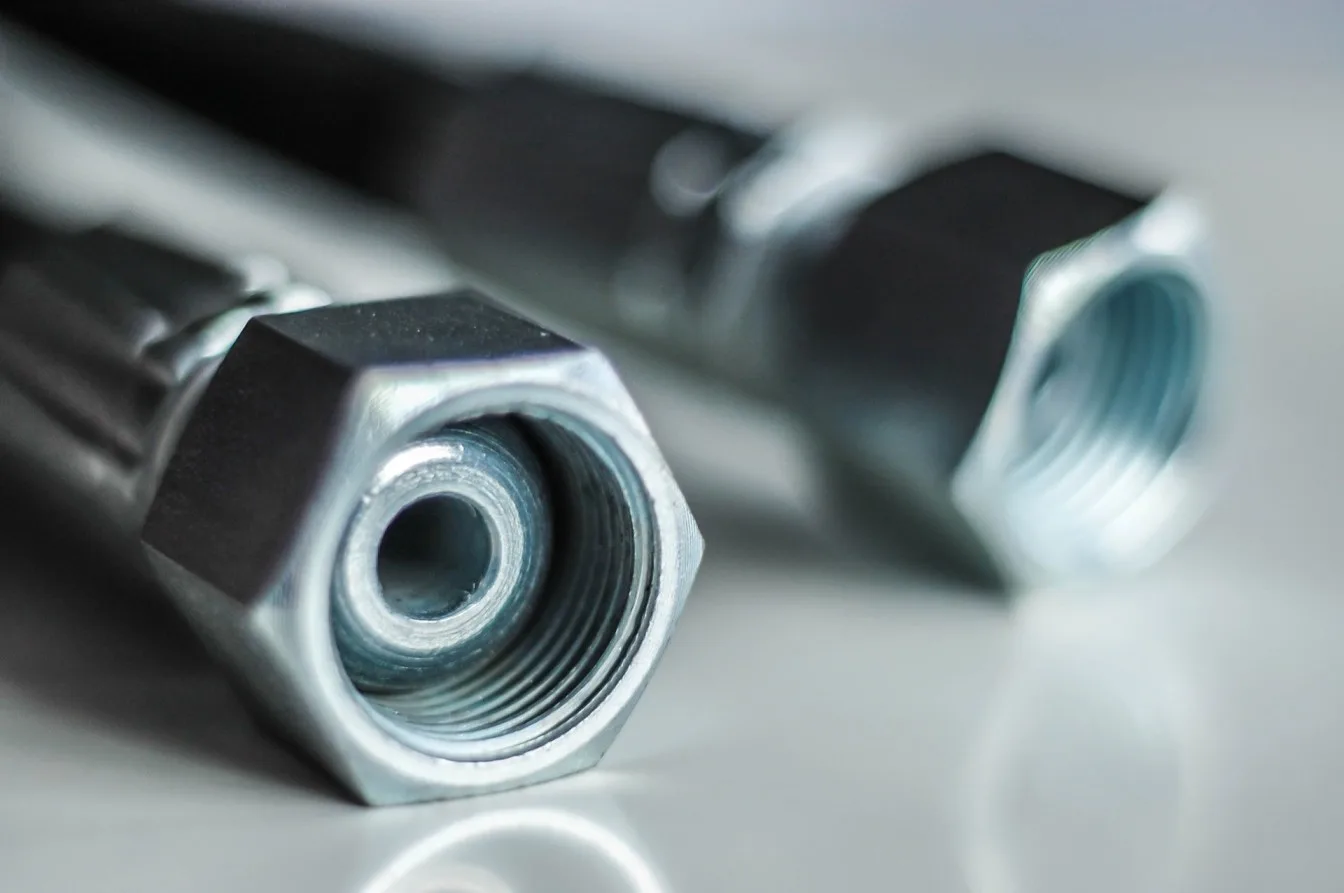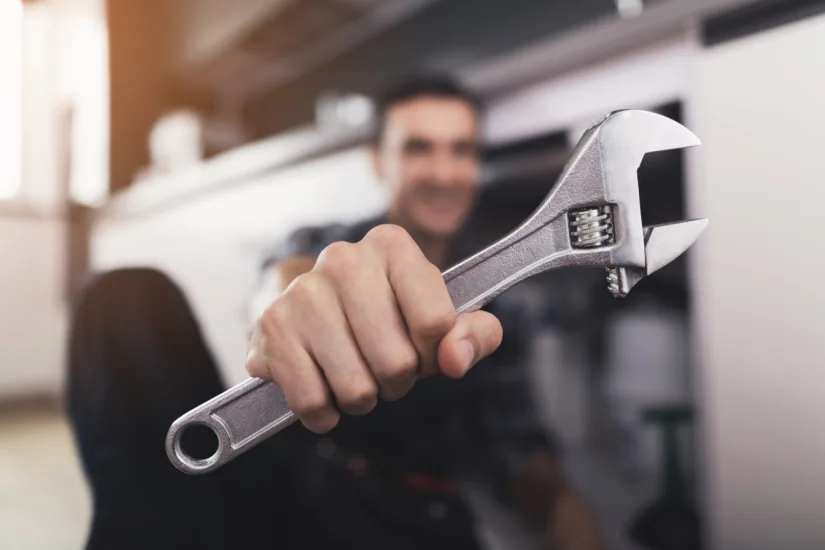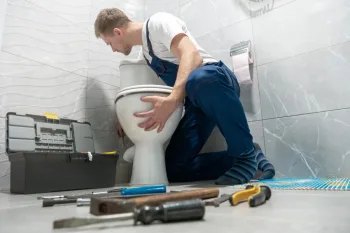
If your toilet is making a hissing noise, it could be a sign of an underlying plumbing issue. While a faint sound may seem harmless, a persistent or loud hissing noise may indicate a problem that, if left unchecked, can lead to higher water bills, inefficient flushing, or even water damage. Contact an experienced plumber who can identify the cause and provide reliable repairs to fix the issue.
Common Causes of a Hissing Toilet
Here are some of the most common causes of a hissing toilet.
Faulty Fill Valve
The fill valve controls the flow of water into the toilet tank after each flush. When it is functioning correctly, it shuts off once the tank reaches the correct water level. However, if the fill valve is worn, damaged, or improperly adjusted, it may fail to close completely, allowing water to keep flowing.
This continuous flow creates a hissing noise as water is forced through the valve. Over time, fill valves can degrade due to sediment buildup, wear and tear, or manufacturing defects, making them one of the most frequent culprits of a hissing toilet.
High Water Pressure
Excessively high water pressure in a plumbing system can cause water to rush into the toilet tank too forcefully, creating a hissing sound. Toilets are designed to handle a certain level of water pressure, and when that threshold is exceeded, water can rush through the fill valve faster than intended.
This can lead to turbulence inside the tank, causing a constant or intermittent hissing noise. High water pressure can also put stress on other plumbing fixtures, accelerating wear and increasing the risk of leaks.
Leaking or Deteriorated Flapper
The toilet flapper is a rubber or plastic component that seals the flush valve opening at the bottom of the tank. When the flapper is lifted during flushing, water rushes from the tank into the bowl. Once the tank is empty, the flapper should close tightly, allowing the tank to refill.
However, if the flapper is worn, warped, cracked, or improperly aligned, it may allow water to leak from the tank into the bowl slowly. This continuous leak keeps the fill valve engaged, leading to a persistent hissing sound as water replenishes the lost volume.
Improperly Adjusted Float
Toilets use a float mechanism to regulate the water level in the tank. If the float is set too high, it may prevent the fill valve from shutting off completely, causing excess water to flow into the overflow tube.
This results in a continuous cycle of water refilling and draining, producing a faint or loud hissing sound. A misaligned or sticking float can also contribute to inconsistent water levels, leading to further inefficiencies.
Defective Ballcock Assembly (Older Toilets)
Older toilets typically use a ballcock mechanism, which consists of a float ball attached to an arm. When water fills the tank, the float ball rises, signaling the shutoff of the fill valve. If the ballcock assembly becomes corroded, bent, or misaligned, it may fail to properly regulate the water flow, causing a continuous trickle of water and a hissing noise.
Though most modern toilets have transitioned to newer fill valve designs, many older commercial and residential toilets still rely on ballcock mechanisms, making them a potential cause of persistent hissing sounds.
Sediment or Debris Buildup
Over time, sediment, mineral deposits, and debris from the water supply can accumulate inside the fill valve and other toilet components. This buildup can partially obstruct water flow, causing uneven or turbulent movement through the system.
The result is usually a hissing or whistling noise as water struggles to pass through the restricted areas. Challenging water conditions and old plumbing systems are especially prone to this type of sediment accumulation, which can gradually worsen over time.
Continuous Water Flow into the Overflow Tube
The overflow tube is designed to prevent excessive water levels in the tank. If water is continuously flowing into this tube, it means that the fill valve is not shutting off properly, either due to a defective valve, high float adjustment, or a slow tank leak. As water constantly drains into the overflow tube, it creates a subtle hissing sound that may persist indefinitely unless addressed.
To sum up, If a toilet is making hissing noises, the issue may stem from the flush valve assembly or the refill valve. Excessive air pressure resulting from water flow can cause continuous noise, mainly if the overflow pipe is not functioning correctly.
A worn-out flapper can also lead to leaks. If the issue is with either the flapper or the flapper chain, improper sealing can cause water to keep flowing into the toilet bowl, leading to persistent hissing sounds.

How Our Experienced Plumbers Will Fix the Hissing Sounds in Your Toilet
At Coastal Commercial Services, our experienced plumbers use advanced tools and proven techniques to ensure your toilets operate efficiently, preventing water waste and costly repairs. Here’s how we tackle the issue.
Comprehensive Inspection and Diagnosis
Before making any repairs, our skilled plumbers conduct a thorough inspection of your toilet’s internal components. We check for:
- Faulty Fill Valves – We examine whether the fill valve is stuck open, leaking, or failing to shut off properly.
- Flapper Issues—A deteriorated flapper can cause slow leaks, which trigger the fill valve and produce a hissing sound.
- Water Pressure Levels – We measure the water pressure to determine if excessive force is causing turbulent water flow in the tank.
- Float Malfunctions – We ensure the float is adjusted correctly to regulate the tank’s water level.
Fill Valve Repair or Replacement
A faulty fill valve is one of the most common culprits behind a hissing toilet. This component regulates water flow into the toilet tank and ensures it stops once the tank reaches the proper level. When the valve malfunctions, water continues to flow, producing a constant hissing sound.
At Coastal Commercial Services, our plumbers take a systematic approach to resolving fill valve issues:
- Cleaning and Adjustment—If sediment buildup prevents the valve from shutting off correctly, we clean it to restore functionality.
- Replacement – If the valve is worn out or damaged, we install a new, high-quality, commercial-grade fill valve designed for long-term durability.
- Ensuring Proper Water Flow – By fine-tuning the new fill valve, we eliminate unnecessary noise and prevent future issues.
Flapper Replacement for a Proper Seal
A deteriorated or misaligned flapper can cause a slow leak, triggering the fill valve and leading to constant hissing. Our plumbers:
- Inspect the flapper for cracks, warping, or improper sealing.
- Replace the flapper with a durable, high-quality model suited for commercial restrooms.
- Clean the flush valve seat to ensure a proper seal and prevent continuous water flow.
Float Adjustment to Prevent Overfilling
If the float is misaligned, it may keep the fill valve open indefinitely, leading to continuous water flow and hissing. Our team:
- Adjusts the float height to the manufacturer’s specifications.
- Ensures it moves freely and shuts off water at the correct level.
This prevents excessive water from entering the overflow tube and stops the hissing noise.
Pressure Regulation for Optimal Flow
If high water pressure is causing excessive force within the system, we install a pressure-reducing valve to regulate flow. This solution:
- Reduces water turbulence inside the toilet tank.
- Prevents excess strain on plumbing components.
- Eliminates hissing sounds while optimizing overall performance.
At Coastal Commercial Services, we are committed to providing fast, efficient, and reliable toilet repairs for your property. To schedule a service, call us 24/7 at (772) 341-0094 or contact us online.



